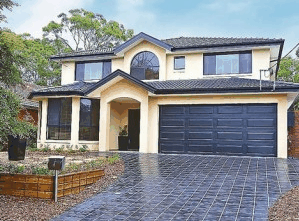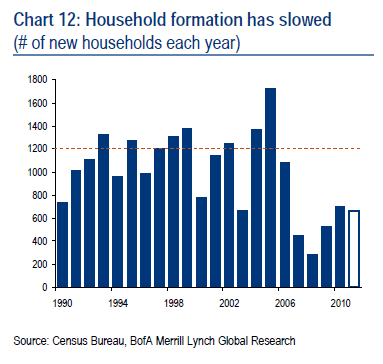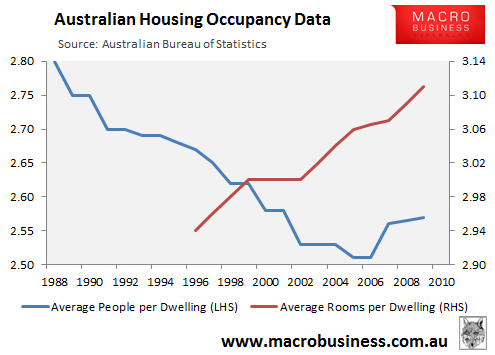
‘Underlying demand’ (or ‘pent-up’ demand) is the common methodology used in calculating whether there is a housing shortage. Put simply, underlying demand estimates what the demand for newly-built housing might be given the growth in population, trends in household size, demand for second (or holiday) homes, and economic conditions (e.g. employment, interest rates, etc). Underlying demand differs from ‘effective (actual) demand’, which is the quantity that owner-occupiers, investors and renters are actually able and willing to buy or rent in the housing market.
In the lead-up to the US housing bust, underlying demand was running strong. Unemployment was low, the US economy was motoring along, credit was readily available, and a record 1.7 million households were formed in 2005 – 500,000 more than the long-run average of 1.2 million household formations per year.
The surge in household formations led to numerous suggestions that the US was facing a housing shortgage, especially in areas where strict land-use regulations were in effect, such as California.
The rest is history. The US housing bubble popped, the economy tanked, and the rate of household formation fell to around half the long-run average (see below chart), leaving a vast oversupply of homes, even in supply-restricted markets like coastal California.

Five years after the bubble burst in the US, rates of household formation finally appear to be returning to long-run norms, with 1.15 million households added in the US in the year to September. From the Wall Street Journal:
Americans are setting up house at the fastest rate in more than six years, an indication that recession anxiety, which prompted adult children to move in with their parents and single people to postpone marriage, is starting to ease.
The nation added 1.15 million households in the 12 months that ended in September, according to the most recent Census Bureau data. That is a significant rise from the past four years when an average of 650,000 households were formed annually…
Rising household formation, which is tied to employment growth, means more students are finding jobs when they leave college, more adult children are leaving their parents’ homes and more couples feel confident enough about the future to tie the knot. It could also mean that immigration is picking up…
“In the depths of the recession, three households would turn into one.…We’ve been waiting for this unbundling to happen,” said Ara Hovnanian, chief executive of Hovnanian Enterprises Inc., one of the nation’s largest builders of single-family homes. “Demographics is destiny, in the end.”
The key lesson from the US experience is that the demand for housing is highly changeable depending, largely, on prevailing economic conditions. And while Australia is in some respects fortunate that it has not experienced the types of over-building experienced in some other nations, it could equally be argued that there is significant latent capacity (excess bedrooms) in the pre-existing housing stock versus persons per dwelling (see below chart).

Should economic conditions deteriorate significantly, such as via a disorderly unwinding of the mining boom, the number of Australians opting for group accommodation (or the number of young people moving back into mum and dad’s) could rise significantly, turning a perceived housing shortage into a surplus.
There is also the risk that any reduction of housing demand arising from deteriorating economic conditions crimps the rate of new home construction, in turn shattering the RBA’s and Treasury’s plans for housing to fill the void as the mining boom unwinds.
Twitter: Leith van Onselen. Leith is the Chief Economist of Macro Investor, Australia’s independent investment newsletter covering trades, stocks, property and yield. Click for a free 21 day trial.

